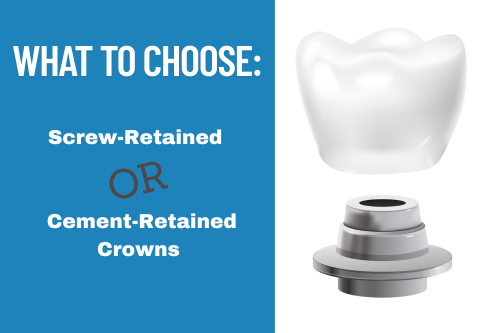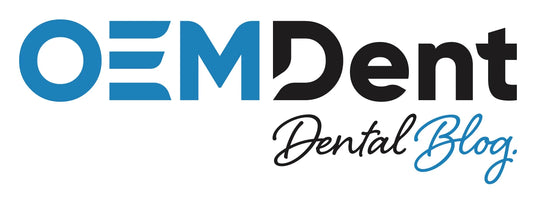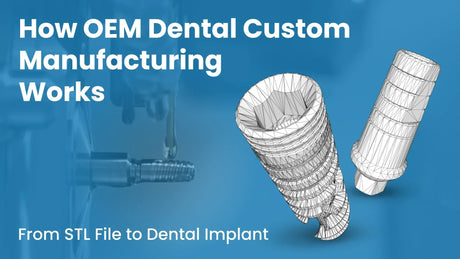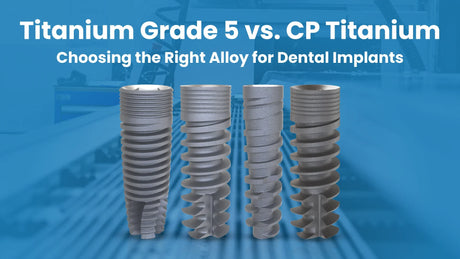

Screw-Retained vs. Cement-Retained Crowns: Which One is Better (And Why)?
Alright, let’s settle this debate once and for all.
If you’ve ever placed an implant crown (or if you're about to), you’ve probably asked yourself:
Should I go with a screw-retained crown or a cement-retained crown?
It’s a BIG question in implant dentistry, and honestly? Both options have their pros and cons.
One is easy to remove but might have a little screw hole. The other looks seamless and beautiful but can turn into a nightmare if something goes wrong.
So, which one is actually better? Let’s break it down in a way that’s super simple, engaging, and actually helpful.
What Are We Talking About? (Quick Overview)
Before we start picking sides, let’s make sure we’re all on the same page.
Screw-Retained Crowns 🔩
These are attached to the implant abutment using a tiny screw that goes straight through the crown. The screw holds everything in place, but the crown has a visible access hole (which we cover with composite to make it look nice).
Cement-Retained Crowns 🏗️
These are cemented onto the abutment, just like a regular crown on a natural tooth. No screw hole, no visible marks - just a seamless, natural-looking tooth. Sounds perfect, right? Well… not so fast.
Both options work well, but they have very different advantages and disadvantages. Let’s compare!
Round 1: Ease of Removal & Repairs
Screw-Retained Crowns: Super Easy to Take Off
Let’s say something goes wrong - maybe the patient chips the crown, or you need to replace a worn-out restoration. With a screw-retained crown, no problem!
-
Just remove the composite filling
-
Unscrew the crown
-
Fix whatever needs fixing
-
Screw it back in
Easy. Quick. No stress!
Cement-Retained Crowns: Hope You Don’t Need to Remove It
Now, imagine you cemented the crown onto the abutment and a problem pops up. Uh-oh.
The only way to fix it is to:
🚨 Cut the crown off (goodbye, expensive restoration)
🚨 Hope the abutment isn’t damaged
🚨 Remake everything from scratch
Yeah… not fun.
🏆 Winner: Screw-Retained Crowns (Because nobody likes destroying their work just to fix a small issue.)
Round 2: Aesthetics (Which One Looks Better?)
Cement-Retained Crowns: The Beauty Queen 👑
Cemented crowns look flawless. No screw hole. No extra steps. Just a perfect, natural-looking tooth.
For anterior (front) teeth, this is a big deal because even the tiniest imperfection can stand out.
Screw-Retained Crowns: The Tiny Hole Problem
Even though the screw hole gets covered with composite, it’s still a slight imperfection in the crown.
Is it super noticeable?
➡ Not really, especially in posterior teeth where nobody sees it.
➡ But for front teeth, some patients and dentists might not love it.
🏆 Winner: Cement-Retained Crowns (Because sometimes, aesthetics really do matter.)
Round 3: The Peri-Implantitis Problem (A Silent Killer)
Alright, this is a big one.
Peri-implantitis is basically gum disease for implants - a nasty infection that causes bone loss, implant failure, and a ton of headaches. And guess what? It’s much more common with cement-retained crowns.
Why? Because of Excess Cement! 🚨
-
When cement is used, some of it often gets trapped under the gums.
-
It irritates the tissue and can lead to inflammation, infection, and bone loss.
-
Even the best dentists in the world struggle with controlling excess cement 100% of the time.
Screw-Retained Crowns: No Cement, No Problem
Screw-retained crowns don’t use cement. No cement = No cement-related peri-implantitis risk. Simple as that.
🏆 Winner: Screw-Retained Crowns (Because implant failure is not something you want to deal with.)
Round 4: Strength & Stability
Cement-Retained Crowns: A Stronger Bond?
Since these crowns are literally glued in place, they distribute forces evenly and are very stable.
If a patient has a strong bite or tends to grind their teeth, a cemented crown might be the better option.
Screw-Retained Crowns: Could Loosen Over Time
Sometimes, the screw can loosen over time, especially in patients who clench and grind.
BUT - the good news is that it’s easy to fix (just retighten the screw).
🏆 Winner: Tie! (Both are strong, but cemented might be a little more stable in high-force cases.)
Final Verdict: Which One Should You Use?
When to Choose a Screw-Retained Crown 🔩
✅ When you need easy retrievability (because repairs and maintenance WILL happen).
✅ When working with posterior teeth (where the screw hole won’t be visible).
✅ When you want to avoid peri-implantitis (because cement sucks when it gets under the gums).
✅ When you’re working with full-arch restorations (like All-on-4 cases).
When to Choose a Cement-Retained Crown 🏗️
✅ When aesthetics are the top priority (especially for front teeth).
✅ When the implant angle makes a screw-retained option difficult (sometimes screw access is tricky).
✅ When the bite forces need to be perfectly even (cement creates a really solid, even connection).
So, Which One is the Winner? 🏆
👉 If you’re thinking long-term and want easy fixes, Screw-Retained Wins.
👉 If you’re all about flawless aesthetics, Cement-Retained Wins.
But if we’re being honest? Most dentists are shifting toward screw-retained crowns whenever possiblev - because retrievability is a game-changer, and no one wants to deal with implant failure due to excess cement.
That said… it always depends on the case.
Both options work. Both have their place. And the best dentists know when to use which!
Final Thoughts (And a Quick Takeaway)
At the end of the day, there’s no single right answer. But if you’re placing implants (or getting one yourself), it’s super important to understand the pros and cons of each option.
🚀 Want high-quality abutments, screws, and implant restorations? Check out our top-tier implant solutions!
Now tell us - which one do YOU prefer: screw-retained or cement-retained? Let’s hear your thoughts! 😃⬇

OEMDent.com offers uncompromised quality, cost-effective dental implants & prosthetics compatible with leading implant systems. We go beyond manufacturing, offering OEM & Private Label services to meet your dental needs.






